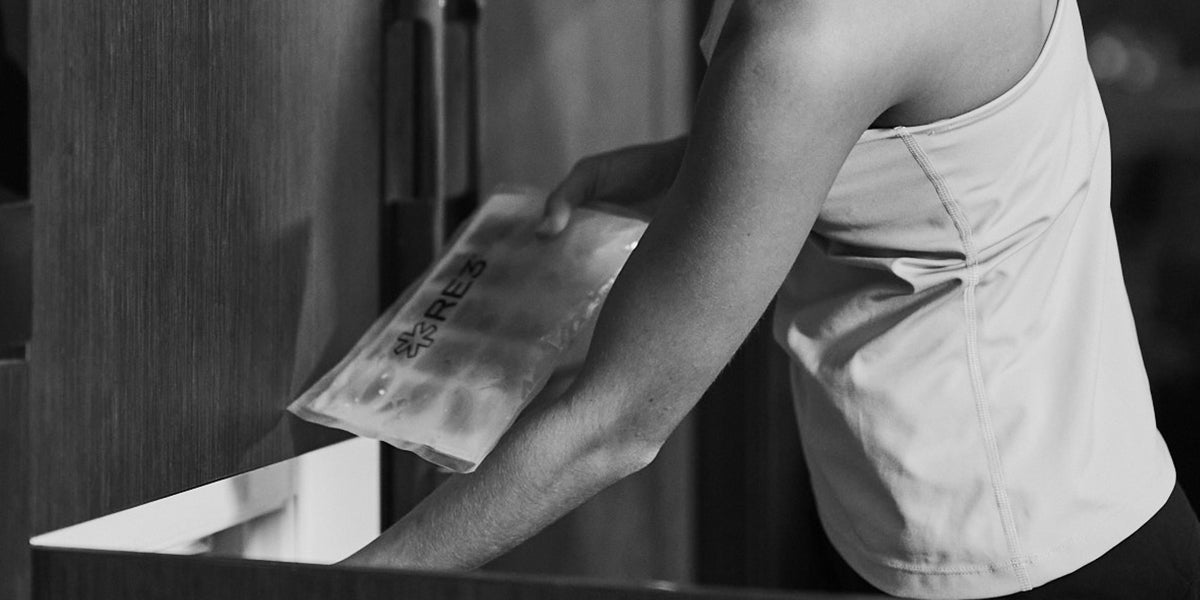In the world of orthopaedic surgery and sports medicine, anterior cruciate ligament or ACL injury is a frequent occurrence for elite sports players and everyday fitness fanatics alike. Reconstruction surgery is a common treatment for major tears, which, despite its effectiveness, is not without its challenges.
A well-known challenge post-ACLR is persistent arthrogenic muscle inhibition (AMI); an impairment which causes decreased muscle activation, reduced muscle strength and considerable stiffness. If left untreated, AMI can significantly hamper recovery, causing prolonged muscle weakness and delaying return to full function. It’s also a huge emotional distress for patients who are eager to start moving and achieve full recovery as soon as possible.
A groundbreaking study conducted by the University of Virginia’s sports science faculty in 2014 shed light on the potential of cooling therapy (cryotherapy) to revolutionise recovery for ACLR patients and individuals recovering from acute myocardial infarction (AMI).
The Study: Improving muscle strength with cryotherapy
Originally published in the Journal of Athletic Training and funded by the American Orthopaedic Society for Sports Medicine, PhD doctors conducted a study to evaluate the efficacy of cryotherapy in alleviating AMI in ACLR patients.
The study involved three distinct groups of patients, all of whom experienced persistent AMI following their ACLR surgeries:
- Standard Rehabilitation Group: Patients received the conventional post-surgery rehabilitation protocol.
- Cryotherapy Group: Patients underwent the standard rehabilitation protocol with the addition of targeted ice cooling therapy.
- Control Group: Patients did not receive any specific cooling intervention beyond basic care.
The Cooling Effect: Results That Speak Volumes
The results of this study were extremely positive. The group that received both cryotherapy + exercise together exhibited a significant reduction in AMI compared to the other groups. Not only did these patients show improved muscle activation, but they also experienced enhanced functional outcomes such as better range of motion and a speedier return to physical activities.
“After ACL reconstruction, patients with AMI who performed rehabilitation exercises immediately after cryotherapy experienced greater strength gains than those who performed cryotherapy or exercises alone.”
- Joseph M, Hart ‘Quadriceps Muscle Function After Rehabilitation With Cryotherapy in Patients With Anterior Cruciate Ligament Reconstruction’, J Athl Train. 2014 Nov-Dec.
Key takeaways
- Cryotherapy to the knee joint for 20 minutes before rehab exercise improved strength gains
- Knee-joint cryotherapy has been shown to improve quadriceps function for people experiencing AMI
- Rehabilitation strategies for maximising strength gains are a vital part of recovery to allow patients to return to normal lifestyle
Why Cooling Therapy Works
Cooling therapy, also known as cryotherapy or icing, is the intentional reduction of temperature of an injury site. Consistent and repeated application of cryotherapy has been scientifically proven to promote healing by reducing pain and swelling. For ACLR patients, this translates to decreased swelling and muscle spasms, which are common culprits behind AMI. By mitigating these factors, cooling therapy helps maintain muscle strength and promotes a smoother recovery journey.
Practical Implications: A New Standard of Care
The findings from Hart’s suggest that incorporating cooling therapy into standard rehabilitation protocols could be a game-changer for ACLR patients. This approach not only enhances patient comfort but also accelerates the recovery timeline, enabling athletes and active people to return to their routines more swiftly and confidently.
Looking Ahead: Future Directions
While this study provides compelling evidence for the benefits of cooling therapy, further research is necessary to optimise treatment protocols and explore long-term outcomes. Future studies could investigate the ideal duration and frequency of cooling sessions, as well as the potential benefits of combining cooling therapy with other innovative rehabilitation techniques.
Embracing Innovation in ACLR Recovery
The journey of recovery after ACL reconstruction is fraught with challenges, but studies like the one conducted by Hart et al. (2014) offer a beacon of hope. Cooling therapy, with its ability to reduce AMI and enhance functional recovery, holds the promise of transforming post-ACLR rehabilitation. As the medical community continues to explore and validate these findings, patients can look forward to more effective and efficient recovery pathways.
For those undergoing ACLR or involved in the care of such patients, the integration of cooling therapy into rehabilitation protocols might just be the next big step towards optimal recovery and long-term success.
